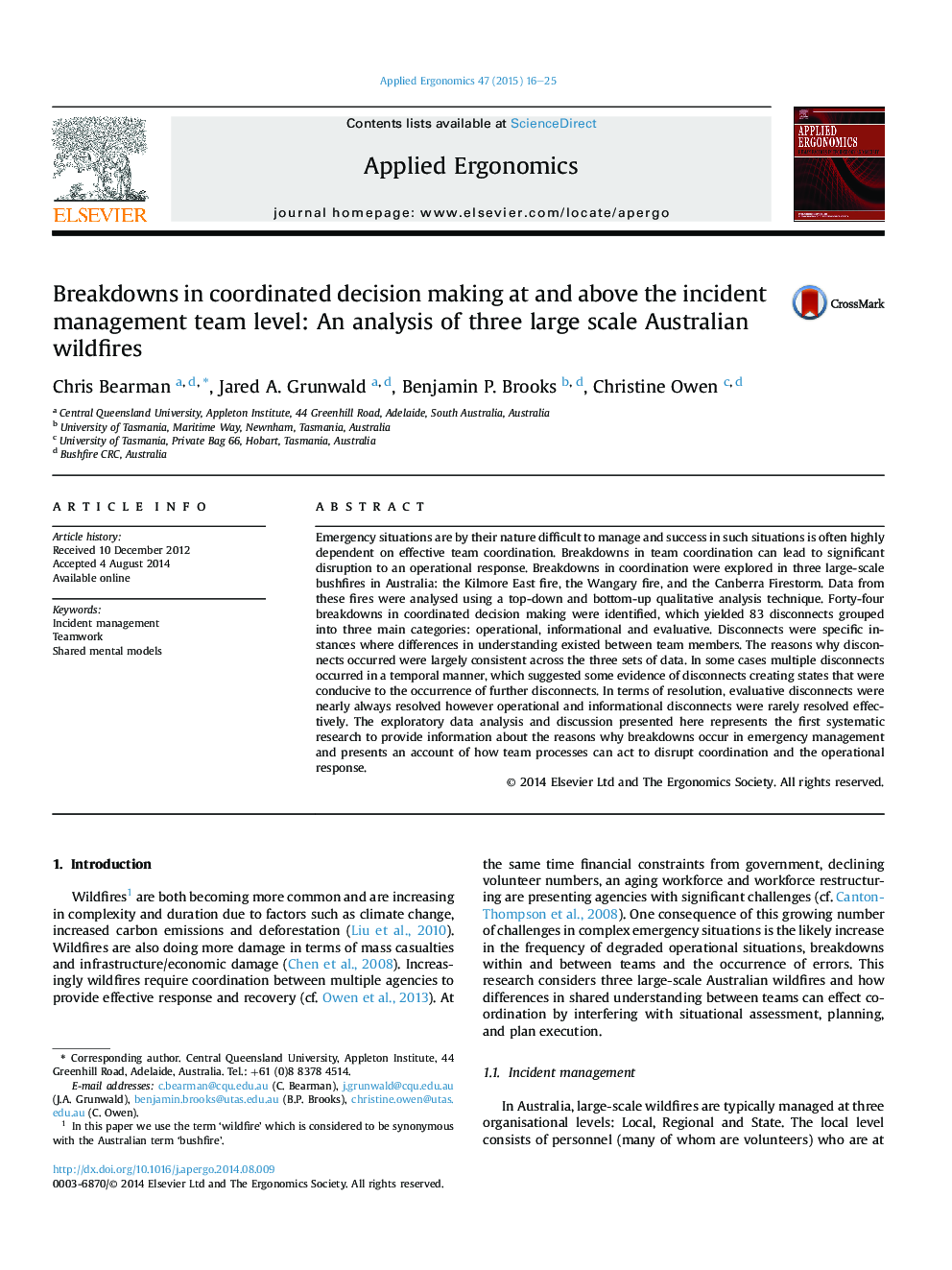| Article ID | Journal | Published Year | Pages | File Type |
|---|---|---|---|---|
| 6947954 | Applied Ergonomics | 2015 | 10 Pages |
Abstract
Emergency situations are by their nature difficult to manage and success in such situations is often highly dependent on effective team coordination. Breakdowns in team coordination can lead to significant disruption to an operational response. Breakdowns in coordination were explored in three large-scale bushfires in Australia: the Kilmore East fire, the Wangary fire, and the Canberra Firestorm. Data from these fires were analysed using a top-down and bottom-up qualitative analysis technique. Forty-four breakdowns in coordinated decision making were identified, which yielded 83 disconnects grouped into three main categories: operational, informational and evaluative. Disconnects were specific instances where differences in understanding existed between team members. The reasons why disconnects occurred were largely consistent across the three sets of data. In some cases multiple disconnects occurred in a temporal manner, which suggested some evidence of disconnects creating states that were conducive to the occurrence of further disconnects. In terms of resolution, evaluative disconnects were nearly always resolved however operational and informational disconnects were rarely resolved effectively. The exploratory data analysis and discussion presented here represents the first systematic research to provide information about the reasons why breakdowns occur in emergency management and presents an account of how team processes can act to disrupt coordination and the operational response.
Related Topics
Physical Sciences and Engineering
Computer Science
Human-Computer Interaction
Authors
Chris Bearman, Jared A. Grunwald, Benjamin P. Brooks, Christine Owen,
